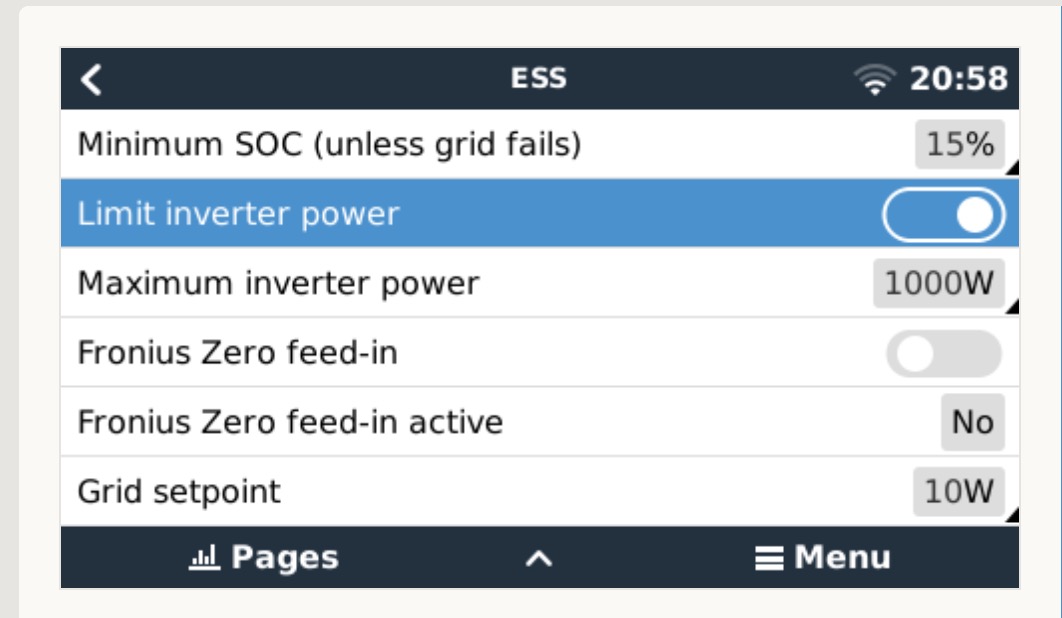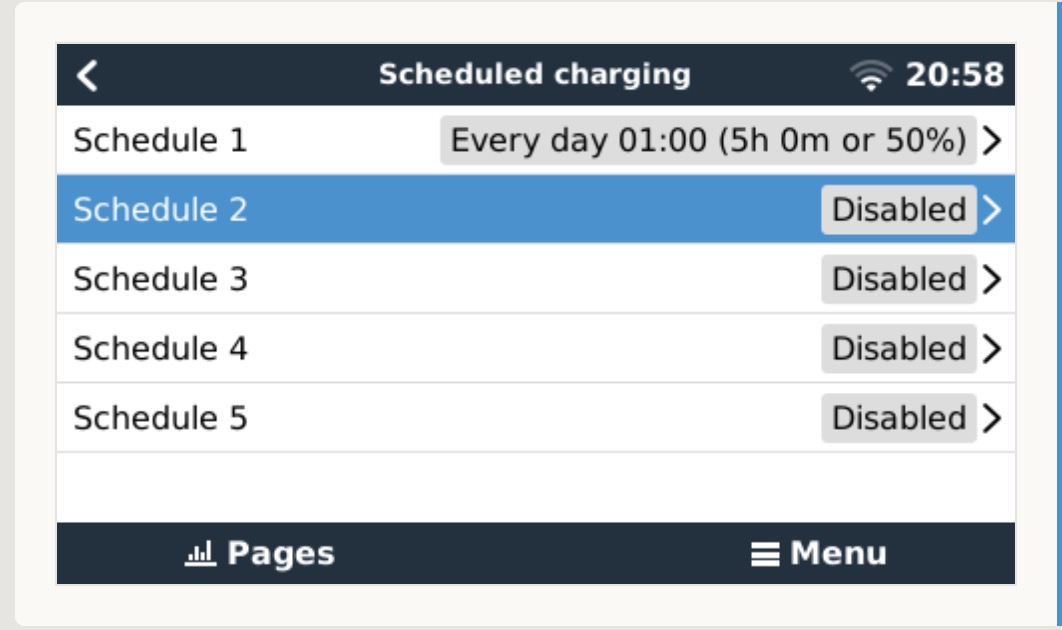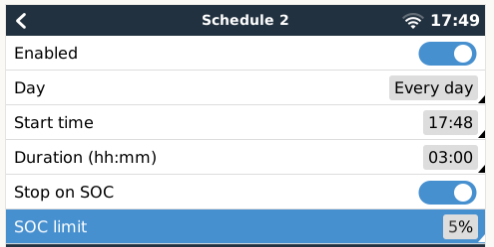Having used ESS for a while now coupled with previous experiences with non-Victron software to optimal use batteries, being from South Africa, please find 2 suggestions.
Under the ESS menu, call it say i.e. Battery Use, where one can:
1) Set the a max AC watts that can be drawn from the batteries during daytime, linked to the the existing SOC.
2) A schedule for evening use of batteries, with these options:
2.1) the max AC watt that can be drawn from the batteries
2.2) with a pre-set SOC above the SOC the system uses, before reverting back to utility power,
2.3) with a pre-set time to start recharging the batteries.
Re. 1: One can then set a optimal "slow" discharge of your batteries, XYZwatts AC max, with peak loads taken up by the Grid during the day instead of pulling the max the batteries can give.
Re. 2: Between 12am and 6am draw a max of XYZwatts AC from the batteries to a pre-set SOC of XYZ% and only start recharging the batteries from 10am only.
During power failures the above settings are obviously ignored.
The core idea behind the above is to give users the option to not over strain the batteries during short burst of power needed daytime and the option to select when to use the batteries for even more savings, managing the recharge if one uses this option, as one knows that between X and Y times there tends to be spare power ... as per the data one has accumulated.
Thank you for reading, hope this could be considered.
Regards
Jaco Reinecke




